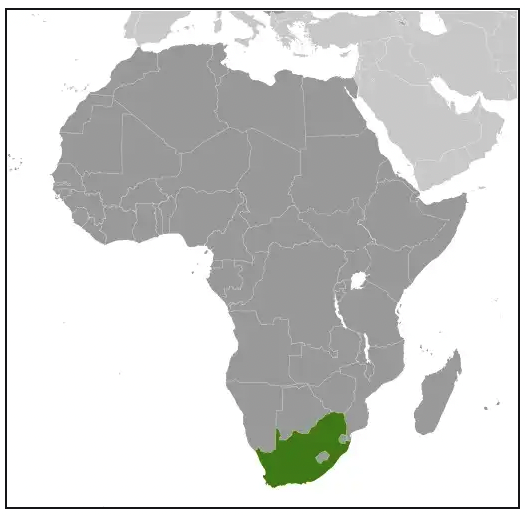
Customs and Cuisine of South Africa
Overview
South Africa is the southernmost country in Africa, known for its natural beauty, cultural diversity, varied topography, and history of apartheid. It is bordered by Namibia, Botswana, Zimbabwe, Mozambique, and Swaziland, and it surrounds the country of Lesotho. South Africa is mostly semi-arid, with sunny days, cool nights, and a subtropical region along the east coast. There are three capitals: Pretoria (administrative capital), Cape Town (legislative capital), and Bloemfontein (judicial capital).
People
South Africa is home to 60 million people, approximately 81% Black African, 9% Colored, 8% White, and 2% Indian/Asian. Almost 60% are under age 30. The vast majority (90%) live in the eastern half and southern coastal regions, primarily in urban areas. Many of these regions contain large squatter settlements that lack basic infrastructure for transportation, water, sanitation, or electricity. Except for Cape Town in the southwest, the western region is sparsely populated.
There are 12 languages spoken in South Africa plus an additional 11 in various regions. English has become the primary language for education and business and Afrikaans has slowly become less common in government. Unfortunately, many residents in rural areas speak neither English nor Afrikaans. Religious affiliation in South Africa is less diversified: due to the country’s European influence, a full 86% are Christian.
Although South Africa has enjoyed more political equality and economic stability in recent years, problems remain. These include rising crime rates, ethnic tensions, and disparities in housing and education.
Economy
South Africa’s primary economic sources are agriculture, mineral resources, tourism, and intellectual capital. The country suffers from rising unemployment and significant income inequality, but it is a strong exporter of rare earth goods. Its economy was revolutionized in the late 1800s when diamonds and gold were discovered. This spurred foreign investment and the establishment of a strong manufacturing base. In the ensuing years, South Africa’s growth rate was strong – sometimes among the highest in the world. However, the economy suffered when countries imposed sanctions and boycotts as a protest against apartheid.
History of Apartheid
The first settlers in the South African region were Bantu-speaking groups who arrived by 500 AD. Dutch traders arrived in 1652, the British seized the Cape of Good Hope in 1806, and the British and Afrikaners (Dutch descendants) ruled together from 1910 to 1961 in what was called the Union of South Africa. The ideology of apartheid (Afrikaans for “apartness”) took root in 1948. This social system called for the complete separation of racial groups and severely disadvantaged people of color. Under apartheid, the minority-white government enforced segregation in all spheres of life, including housing and education. In so doing, it basically created three nations within one country. The first group were the whites, consisting of those with British and Dutch (Boer) ancestry. The second were the Blacks, including Zulu herders and Khoekhoe farmers. And the third were the “Coloreds,” comprised of mix-race individuals and ethnic Asians from India, Malaysia, China, and the Philippines.
Apartheid was strongly opposed by nations around the world, leading to economic and cultural boycotts by the mid-1980s. Forced to acknowledge the flawed nature of ethnic separation in a multicultural country, the government of de Klerk began to repeal apartheid laws starting in 1989. This led to universal suffrage and a democracy, which ultimately resulted in the 1994 election of the imprisoned dissident Nelson Mandela and a Black majority government. Since then, South Africa has made tremendous progress in encouraging and upholding social equity.
Conservation
South Africa is home to many national parks, including the popular Kruger National Park that is noted for its populations of rhinoceroses, elephants, and buffalo. Other national parks are home to mountain zebras and other endangered species. Conservation in South Africa has been boosted by the creation of trans-frontier parks. These areas link nature reserves in neighboring countries to create large geographic conservation areas that extend beyond borders to protect biodiversity and to allow a wider range of movement for migrating animals.
Food
Thanks to its historical confluence of many cultures, South Africa offers a wide range of food choices. These include traditional dishes as well as fine cuisine. As in much of Africa, many meals are centered around vegetables. Maize (corn) is a common staple and is often served as a porridge called mealie pap. Dutch and English settlers introduced sausages and bobotie, which are meat pies cooked with brown sugar, apricots, raisins, milk-soaked bread, and curry. Portuguese settlers introduced fish dishes and Indians introduced many delicious and fragrant spices. South Africans who can afford meat enjoy braai, or barbeque, choosing beef, chicken, lamb, pork, or ostrich. Home-brewed beer is available in African taverns called shebeen.
Sources:
https://www.sahistory.org.za/article/history-apartheid-south-africa
https://www.cia.gov/the-world-factbook/countries/south-africa/factsheets/
https://www.britannica.com/place/South-Africa/Cultural-institutions
https://www.britannica.com/place/South-Africa/Cultural-life
View Recipes from South Africa
South Africa
